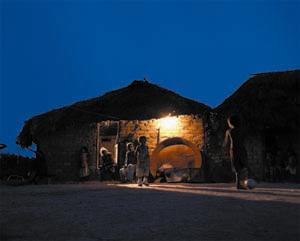DATABASE

Luz para todos
ongoing
Country
Brazil
Budget
>5M $
Year
2003
Issue
Solutions
Link
www.mme.gov.br
Abstract
In 2003 Brazil launched an electrification program based on an obligation on electricity companies to bring electricity to outreached people in their concession area. The program is supported by the evidence of a strong correlation between poor Human development index and lack of electricity access. More than 15M people benefit from the program.
Project Description
In 2003 the Brazilian Government launched an electrification program named ‘luz para todos’. The program aims at universalization of electricity access connecting an estimated 10 million families within a decade. The policy introduces an obligation on electricity distribution companies to provide electricity services to un-served population within their concession area. The principles behind the implementation of the policy were inspired by the strong correlation found at the national level between the population with lowest Human Development Index (HDI) indicators and those not reached by modern energy. The national electrification strategy can be considered a social policy to reduce the development divide among different areas of the country. All electricity companies are asked to develop an energy access strategy within their concession area. The legislator did not choose the technology or the solution to reach new customers. Companies can opt between traditional grid extension, development of mini-grids in isolated areas or installation of stand-alone systems for most remote customers. The resources to develop the new infrastructure are taken partly by Federal and State government funds, such as grants and subsidies, and partly by distribution companies own finances. Companies’ costs are than translated into electricity tariffs. The program was re-launched for the period 2011-2014 with a higher emphasis on mini-grids and isolated systems to reach most remote customers.
BENEFICIARIES
The program is estimated to have reached 2.9 million households with more than 15 million beneficiaries. Access to electricity has also been extended to public services and productive infrastructures
Results
In 2000 rural electrification was 71%, at the end of first program phase (2010) it had increased to 92.6%. 2010 census reported 600.000 households still without electricity as most of new connections were achieved by grid extensions. The second phase (2011-2014) focused on mini-grid and off-grid solutions. HDI improvements are visible in health, education and income indicators. Access to energy resulted in better health condition, lower kerosene burning, better food conservation and vaccines, larger access to healthcare devices, to water for human and agriculture, to culture via prolonged light-time for human activities and study, increase in agricultural production processes and consequently in the incomes of local population, higher value in products from the communities, expansion of commercial and credit activities. In the larger picture, the program had a beneficial effect on the national economy as it created a demand for 1,5m TV sets, refrigerators and other appliances.
Business Model
The policy cost is estimated at 6.7 billion €. The program is financed by the Federal Government through the Energy Development Account as subsidies and the Global Reserve Fund as credit (72%). Additional resources are from State and Municipal funds and companies’ own resources. Each company strategy is financed according to its concession area characteristics. The aim is to balance the cost among consumers. In area with higher connection cost a higher contribution by Government is expected.
Lessons Learnt
Luz Para Todos is an example of a top-down approach to reach universalization of electricity access. Following previous experience, local committees were created to monitor the implementation of the plan and adapt the top-down approach to local contexts. The census estimation of unserved people proved to be lower than reality. Population with low HDI is often not revealed. A larger number of beneficiaries emerged during program implementation. Additional resources were needed to reach the target. Electricity companies preferred to extend the grid rather than develop minigrid and isolated system. Most remote communities could not be reached. The second phase focuses on those solutions.
Key Feature
Luz para todos represents a replicable example of a centralized policy to extend electricity access. Most economic resources to implement the strategy are coming from the Government and companies’ costs are recovered through the electricity tariff. This implies a strong institutional framework in place. Those institutional characteristics are not always found in countries with low access rates. For many countries it is difficult to direct a comparable amount of resources to energy access targets, such as Brazil has done in recent years. Nevertheless Brazil has proved that a sound top-down approach is able to deliver impressive results and other South American states are following the example. All main institutions involved, Government, Eletrobras and the Regulator are monitoring program results. Some concerns are arising regarding the future maintenance cost of decentralized systems. Most distribution companies include a section on ‘Luz Para Todos’ in their annual reports.
Other significant information
An important feature of Luz Para Todos is the involvement of the Electricity Regulatory Authority (ANEEL) in the policy implementation. ANEEL has the duty to approve the distribution companies’ strategies, translate the costs in the tariff, regulate the access, the characteristics and the tariff of off-grid systems. In most countries access to mini-grid is not a regulated area. Luz Para Todos shows that it may be useful to regulate even individual production system as part of a national wide program. The unbundling regulation does not allow distribution companies to own generating assets. Therefore when bringing electricity in remote areas companies have to ask third parties to commission the generating units and sign power purchasing agreement and repayment contracts with the executing agents. The works are assigned through competitive auction mechanisms. Luz Para Todos sees the application of highly advanced electricity market mechanisms for the purpose of energy access targets.
Main Donor
Ministry of Mines and Energy
(Government)
Implementing Actor
Ministry of Mines and Energy (Government)
